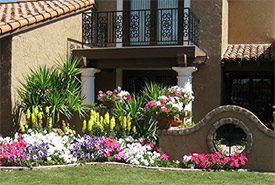Gardeners & lawn owners beware: Invasive species may be in your care! (Part Two)

Do you know which species are invasive in your yard? (Photo by Dru Bloomfield)
Whether you are living in an urban centre, suburban subdivision or rural regions, manicured gardens provide a stark contrast to vegetation growing freely in forests, wetlands and roadsides. Many of us have been brought up to appreciate well-groomed green spaces for their aesthetic values.
But not all things green are good for our environment or good for us, as I recently discovered in my family's backyard.
According to the Canadian Food Inspection Agency’s Invasive Alien Plants in Canada summary report, “there is an estimated 486 invasive alien plants species in Canada,” of which many arrived in North America through trade, immigration and colonization. It's estimated that every two years in the past century, a new invasive plant becomes established in Canada concentrated in populated provinces such as British Columbia, Ontario and Quebec.
Could young and seasoned green thumbs be unknowingly planting and propagating species harmful to our environment and even our health?
Take this quick test to see if you can tell which popular plants present a threat to native biodiversity:
Question 1
| Japanese honeysuckle vine |
 |
|
(Photo by Aftab Banoori) |
| Goldflame honeysuckle |
 |
|
(Photo by Amos Oliver Doyle) |
OR
Question 2
| Yellow flag iris |
 |
|
(Photo by Joost J. Bakker) |
| Northen blue flag iris |
 |
|
(Photo by Joshua Mayer) |
OR
Question 3
| Giant hogweed |
 |
|
(Photo by Henry Clark) |
| Great angelica |
 |
|
(Photo by Fritz Flohr Reynolds) |
OR
Question 4
| Sugar maple |
 |
|
(Photo by Liz West) |
| Norway maple |
 |
|
(Photo by Doc Searls) |
OR
Click here to display the answers!
How did you do on the quiz?
Let’s face it; we’re not all botanists or ecologists with the expertise to accurately identify flora and fauna. But thankfully, there are plenty of resources such and the Nature Conservancy of Canada’s (NCC's) invasive species page to help identify native or non-native plants.
If you're not sure what plants are native to your garden and want to learn more, check out NCC's page on native gardening in your backyard.
Or, contact your local Invasive Species Council (there is one in each province) for more information on how to naturalize your garden. By enhancing and restoring natural elements in your garden, you'll make the urban landscape more wildlife-friendly.


